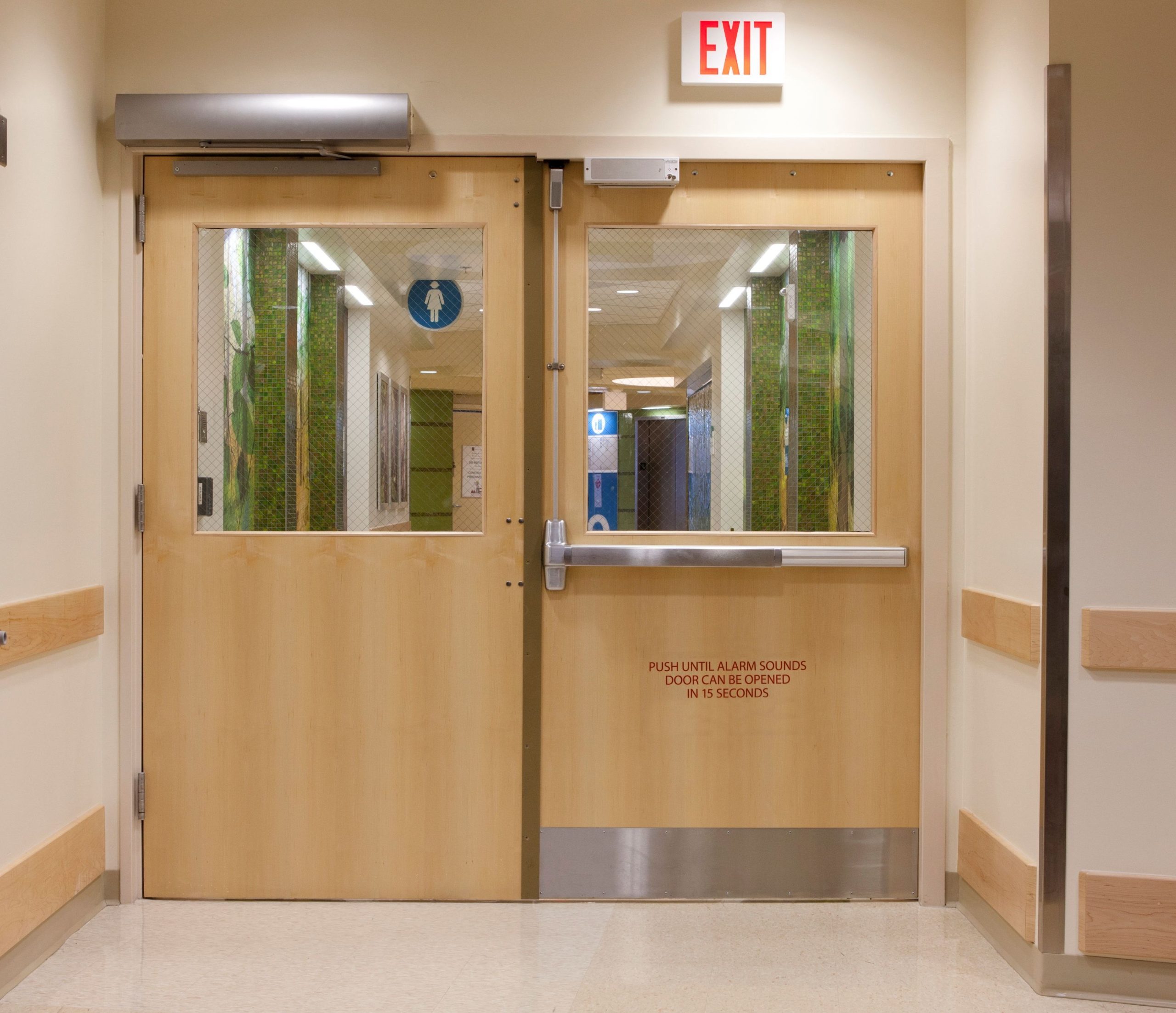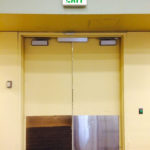If you’re looking for me, I’ll be in the Carmel office for a few days! If you have a code question, ask your local ACE!
 Yesterday’s post about our new delayed egress and controlled egress infographic reminded me of a Quick Question that I received a few weeks ago:
Yesterday’s post about our new delayed egress and controlled egress infographic reminded me of a Quick Question that I received a few weeks ago:
For delayed egress locks, the model codes require the activation of the 15-second timer to be an irreversible process. Is it acceptable for an authorized person with a key or credential to rearm the lock during the 15-second period?
For reference, here is the applicable paragraph from the International Building Code (IBC):
An attempt to egress shall initiate an irreversible process that shall allow such egress in not more than 15 seconds when a physical effort to exit is applied to the egress side door hardware for not more than 3 seconds. Initiation of the irreversible process shall activate an audible signal in the vicinity of the door. Once the delay electronics have been deactivated, rearming the delay electronics shall be by manual means only.
The intent of the model codes is that under normal conditions (not during a fire alarm or power failure) an attempt to exit through a door equipped with a delayed egress lock will begin a 15-second timer. An audible alarm will sound during this period. At the end of the 15 seconds, the lock will release and the door can be used for egress. After the lock releases at the end of the 15-second timer, an authorized person must go to the door and manually rearm the lock using a key or electronic credential; the lock must not be automatically rearmed by the access control system.
This Quick Question came to me because of a code official’s citation for delayed egress locks that were rearmed by staff before 15 seconds had elapsed. It is very common for security personnel or another staff member to go to a delayed egress door that is in alarm and reset it during the 15 second period. Although the model codes do use the word “irreversible,” I can not think of a life safety benefit to requiring staff to wait the full 15 seconds before rearming the lock.
I checked with NFPA Staff to get their opinion on the intent of NFPA 101, which includes similar language to the requirements found in the IBC. They pointed out that NFPA 101 requires the lock to release within 15 seconds (the IBC says “not more than 15 seconds”). The process to initiate the timer and activate the audible alarm must be irreversible, but both model codes allow the lock to be rearmed at any time within the 15-second period.
Any questions?
You need to login or register to bookmark/favorite this content.









Thank You. I had a similar problem with one of my inspectors years ago and this clears my mind!!
I’m so glad, Kevin! Let me know if you think of other problem topics and I will try to address them!
– Lori
It seems to me that I remember something that allowed extension of time in a medical facility with patients who could “escape” care such as an Alzheimer”s unit, 30 seconds is my recollection but I retired years ago. I forget my car keys more but so far have not forgotten what they do! Safety can be reduced at times by safety gadgets.
Hi Jerry –
Delayed egress locks can delay for 30 seconds instead of 15 seconds, if approved by the AHJ. But since 2009, the model codes have allowed controlled egress in certain types of health care units, which prevent egress until evacuation is needed. That’s a better application for memory care. Here’s a video on it: https://idighardware.com/2016/08/controlled-egress-vs-delayed-egress-video/.
– Lori
I We have found that the Delayed Egress hardware we have used, will not allow the alarm to be reset until the countdown is complete and the lock is unlocked. Based on the word “irreversible”, I would think that code does not want the “Unlock Process” to be stopped until the process is complete. If the code allows the unlock process to be stopped before it is complete, it would save many headaches for our counters and altimetry for us. Employees try to reset the alarm using the key before the unlock process is complete and as they put more pressure on the key, the switch fails.
Hi Alex –
Is this one of our products?
– Lori